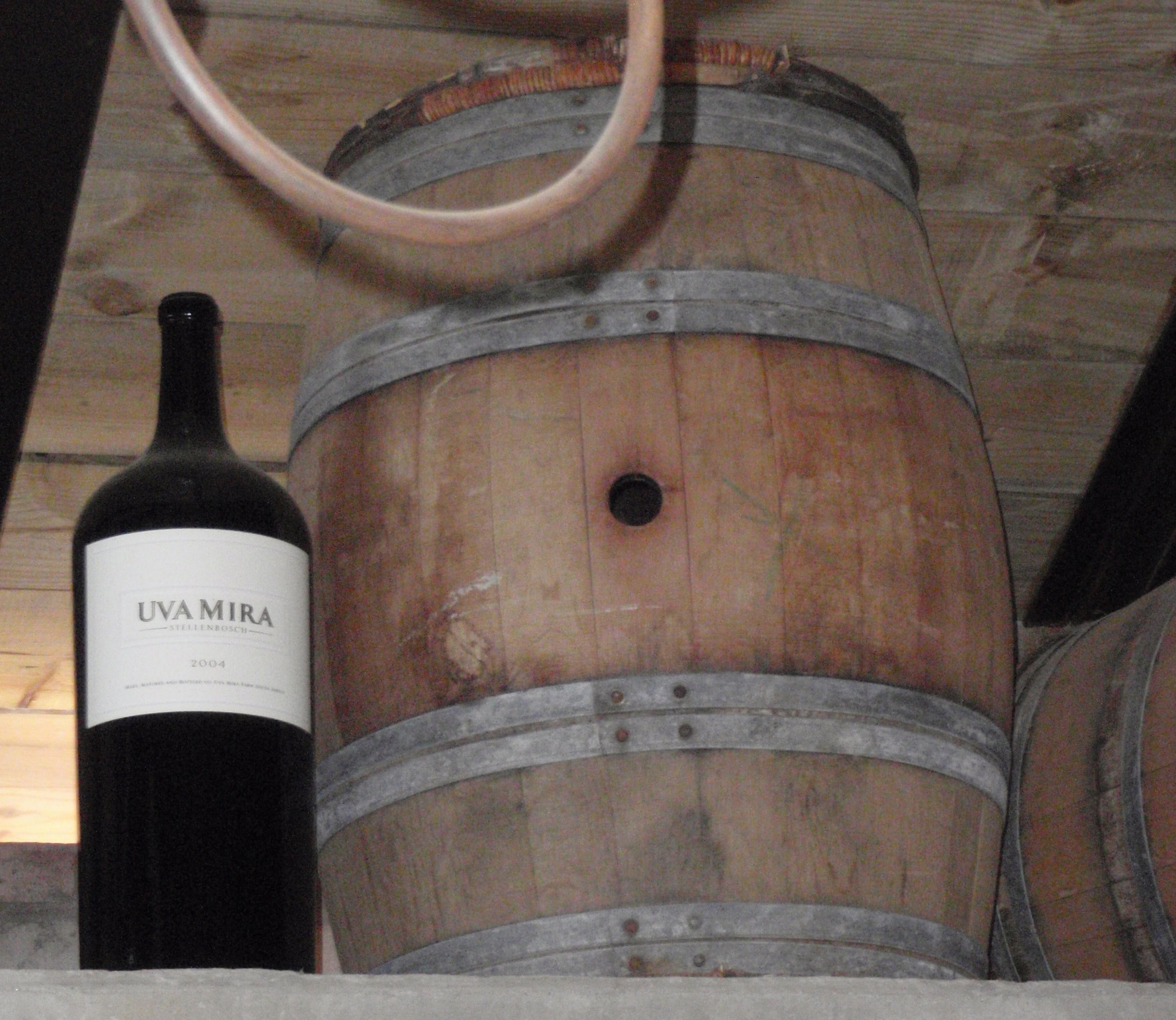Drink Now?

Every once in awhile somebody shows me a bottle of wine they found in their basement and asks if it’s worth anything. I’m always excited to take a look, out of curiosity, but it’s not because I suspect they’re harboring some fortune-making collector’s bottle. I just really love tasting spoiled wine. It’s fascinating, to me, how air can be wine’s best friend and worst enemy with only a few factors making the difference.
And it’s almost certain that I’ll get to indulge my gross-wine-tasting habit, because the vast majority of wines (the number is usually estimated at 90%) are meant to be consumed within one year of purchase. That bottle from 2002 hanging out in your basement might be pretty good, but it’s much more likely to have suffered one or more negative effects of time and environment, especially if it was an everyday wine rather than a wedding or graduation gift or the like. (Wine pricing takes into effect a wine’s ability to age.) In this post I’ll discuss what happens as a wine ages, how to properly store a wine, and why people do the swirl-and-slurp thing.
Air, Time, and Your Wine
Managing wine’s contact with air starts with the picking and crushing of grapes and ends when you down the last sip from the bottle. Wine needs air like Goldilocks needs her porridge: too much, and the wine becomes oxidized, creating overripe fruit, apple cider, caramel, or even syrupy flavors; too little, and the wine becomes reductive, with a smelly rotten-egg flavor. Leave the top off a tank or barrel while wine is aging and you’ll ruin the batch; never expose the wine to air and you’ll also ruin it (or get a rare, temporary enzyme effect called browning, if you’re Chateau Montelena in Bottle Shock).
Winemakers must avoid both oxidation and reduction by aerating (“punching down” or “pumping over”) red wine regularly during fermentation (most white wine gets pressed immediately), adding sulfur dioxide to both whites and reds, and keeping wine firmly under lid or bung while it’s aging. For a more in-depth explanation of the chemistry of oxidation, see Jamie Goode’s excellent description.
The same principle of air control applies to wine packaging. The size of the bottle will affect aging, due to the amount of air contact: half-bottles age more quickly than the standard .750L bottle, while magnums and anything larger will age slightly more slowly. In my discussion of bottle closures I noted that the amount of air allowed to enter a bottle is a major factor in the choice of cork, synthetic cork, or screwcap; a small amount of air exchange, which natural cork affords, allows a wine to “breathe” by miniscule measure over time. Too much time, however, and the wine will oxidize, which is why many older wines under natural cork taste sickly sweet or syrupy and have a brown appearance (reds and whites become more alike in color as they oxidize).
On the other hand, some opponents of screwcapped wines worry that screwcaps’ airtight nature means the wine won’t get enough air, risking reductive flavors and ruining an ageable wine’s development. Screwcap enthusiasts retort that giving wine a little air once it’s in your glass will ease any reductive aromas in minutes, and studies on longer-aging wines have indicated that they won’t suffer under screwcap.
In my experience, there’s nothing to be done about oxidized wine, though people’s thresholds of tolerating it can vary: I’ll send back a glass of wine in a restaurant if I can tell it’s been open for more than a couple days, but I’ll happily drink an older wine that’s probably well past its prime––especially if I didn’t pay for it––because I like to see how oxidative notes mingle with the development of a wine’s positive flavors. Reductive wine, though rather nasty at first, can improve quite a bit with a few minutes of good airtime.
Swirling Your Wine: Yes, You Should Do It
Though it’s a good way to aerate wine on your palate and engage all your taste buds, I’m not going to make anyone slurp or chew their wine like Paul Giamatti in Sideways. But I do encourage readers who aren’t already swirling their wines around in the glass to do so. You don’t need an expensive decanter to let your wine “breathe” (though decanters are nice for full-bottle aeration, and they’re fancy as hell); some aggressive swirling in the glass for a few minutes will do.
But you don’t have to take my word for it: next time you pour a glass of wine for yourself from a bottle, smell it before swirling it. Then give it at least 30 seconds of good movement, planting the base of glass on the table or bar to avoid spilling it. Then smell it again. Notice a difference? I always do: the first sniff, before any aeration, is when I’m likely to notice either flaws or high alcohol content. As the rest of the flavors join the party, the wine almost always gets better. If there’s cork taint or another serious flaw, however, the wine will get worse. Either way, you’ll get more out of your wine by giving it some air.
Wines “built for aging” (discussed in Part 2) will take a bit longer to open up; older wines on the wrong side of their peak will open beautifully after a few minutes but collapse, leaving nothing but fennel and dried-out potpourri, with too much air––so be skeptical of anyone who says you should decant a wine for more than 30 minutes. Generally, if you can’t get a lot of flavor out of smelling or tasting your wine, give it a few minutes of aeration and try again (the sensation of a young wine needing air is often that of a wound-up, tannic, clenched fist, giving way to the snicker-inducing expression “tight”).
Once opened, red wines have about a two-to-three day window during which they’ll taste good; white wines can often go up to four days because they typically contain more sulfites. The less air in the bottle, the longer the wine will last––so if you have only a glass worth left in the bottle, just drink it or invite a friend over to share. Those Vacu-Vin stoppers work by sucking air out of the bottle; in my experience, they’ll give your open bottles an extra day or so.
PS: Those little egg-shaped aeration thingies they sell for up to $35? Don’t bother. Just pour the wine into a decanter, swirl it in your glass for a few minutes, or pour it from one glass into another.
In the second part of this post, I’ll discuss whether and how long to save your wine, and proper storage for all wines.





I once read a sensible recommendation on a bottle of Rioja: A good wine matures, grows and then dies. Don’t keep the bottle for a better opportunity that never arrives.
We recently found that we still had left some bottles at my parents’ house. Having to pour away a Chateauneuf made me cry.
What about hyperdecanting? http://modernistcuisine.com/2011/09/how-to-hyperdecant-your-wine/
I could be a little more clear, do you think it’s good for red wines or just more BS?
I haven’t tried it, due to my general skepticism regarding aggressive decanting advice. I have never encountered a wine that improved after more than 30 minutes of decanting, and I have had several past-peak wines fall apart with overzealous decanting, so I don’t like to risk too much aeration––but I can see how a few seconds in a blender, in theory, could be equivalent to 30 minutes in a decanter. I also don’t trust my blender to touch a good wine without imparting rubber or plastic flavors, which will distract and annoy me, and my habit of pouring wine while I’m cooking, preparing a meal or snack, or placing a takeout order generally aerates it without taking that risk. My friends who have tried it tell me that at best it’s comparable to a good decant, so I don’t think I’m missing much, but I’d welcome anyone who’s tried it to report back in the comments!
Wonderful little series here